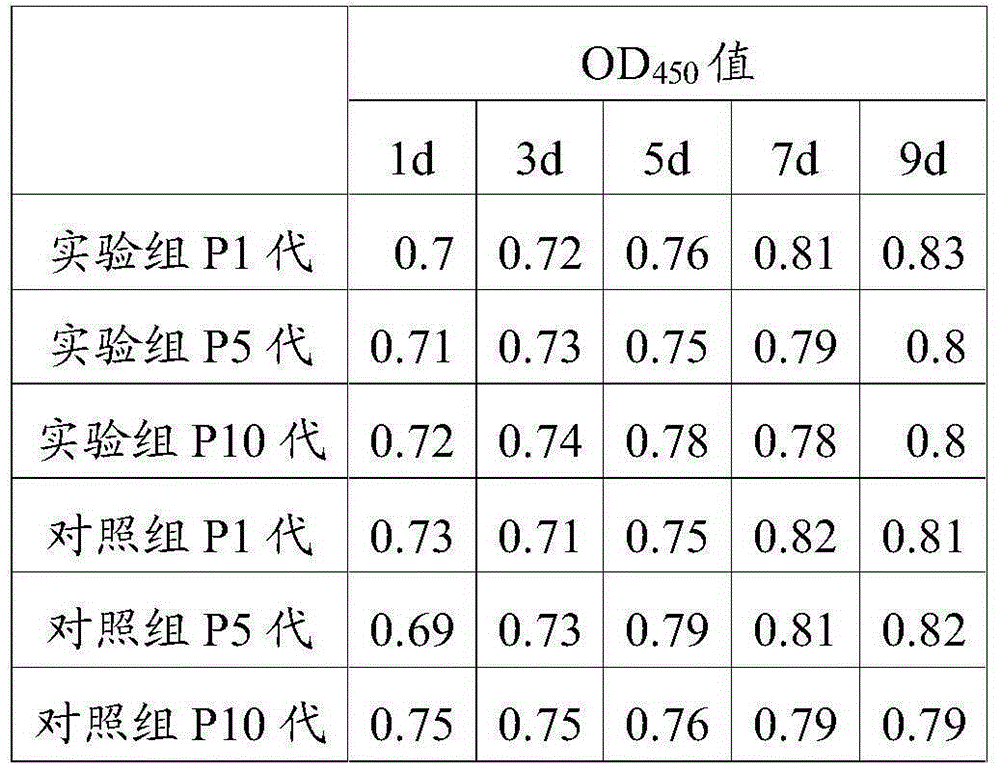Application of AcSDKP in limbal stem cell separation culture and method for culturing limbal stem cell
A corneal limbal stem cell, separation and culture technology, applied in the field of corneal limbal stem cell culture, can solve the problems of reduced corneal limbal stem cell purity, affecting the corneal limbal stem cell proliferation, etc., and achieves a good effect of maintaining stemness
- Summary
- Abstract
- Description
- Claims
- Application Information
AI Technical Summary
Problems solved by technology
Method used
Image
Examples
Embodiment 1
[0043] Medium: 90% DMEM medium + 10% FBS, wherein the mass fraction of AcSDKP is 0.5%.
[0044] The eyeballs of dead fetuses with a gestational age of 3-7 months were soaked in PBS containing double-antibody (penicillin-streptomycin, 1×) for 3 minutes in a sterile environment, and then rinsed with PBS without double-antibody.
[0045] Under the operating microscope, use tissue forceps and corneal scissors to cut the human corneal limbal tissue, and then use scissors to cut the tissue into about 1mm 3 blocky in size.
[0046] According to the volume of the tissue block, every 1cm 2 Add 5ml of trypsin with a mass fraction of 0.25% (prepared in PBS solution, pH 7.2-7.4) to the tissue block, digest at 37°C for 15 minutes, add PBS containing 10% FBS to each 1ml of digestion solution to stop digestion, and filter through a 100um mesh sieve , centrifuged at 1000rpm for 5min, discarded the supernatant, added the culture medium to 1×10 5 The density of cell / ml was inoculated into a ...
Embodiment 2
[0049] Medium: 90% DMEM medium + 10% FBS, wherein the mass fraction of AcSDKP is 1%.
[0050] The eyeballs of dead fetuses with a gestational age of 3-7 months were soaked in PBS containing double-antibody (penicillin-streptomycin, 1×) for 3 minutes in a sterile environment, and then rinsed with PBS without double-antibody.
[0051] Under the operating microscope, use tissue forceps and corneal scissors to cut the human corneal limbal tissue, and then use scissors to cut the tissue into about 1mm 3 blocky in size.
[0052] According to the volume of the tissue block, every 1cm 2 Add 5ml of trypsin with a mass fraction of 0.25% (prepared in PBS solution, pH 7.2-7.4) to the tissue block, digest at 37°C for 15 minutes, add PBS containing 10% FBS to each 1ml of digestion solution to stop digestion, and filter through a 100um mesh sieve , centrifuged at 1000rpm for 5min, discarded the supernatant, added the culture medium to 1×10 5 The density of cell / ml was inoculated into a pe...
Embodiment 3
[0061] Flow cytometric detection was performed on the P1 generation cells cultured in Examples 1-2 and Comparative Example 1. The method is:
[0062] 1. Three parallel tests were carried out for each sample, and 1×10 6 The cells were evenly divided into 2 EP tubes, one tube was used as a control, centrifuged at 1500rpm / min for 5min, and the supernatant was discarded.
[0063] 2. Add 1 mL of staining buffer (PBS containing 10% FBS) to resuspend the cells, centrifuge at 1500 rpm / min for 5 min, and discard the supernatant. Repeat the above steps 1 time.
[0064] 3. After discarding the supernatant, add 200 μL of staining buffer to each tube to resuspend, and add 2 μL of specific recognition basic keratin antibody (AE5), connexin antibody (CX43 antibody), and DNA polymerase δ in the sample group. Protein antibody (PCNA) and BrdU antibody (kits used in the experiment, respectively Monoclonal Anti-Connexin43 (Cx43) kit of AlphaDiagnoesticInternational; PEanti-humanPCNA kit of Bio...
PUM
 Login to View More
Login to View More Abstract
Description
Claims
Application Information
 Login to View More
Login to View More - R&D
- Intellectual Property
- Life Sciences
- Materials
- Tech Scout
- Unparalleled Data Quality
- Higher Quality Content
- 60% Fewer Hallucinations
Browse by: Latest US Patents, China's latest patents, Technical Efficacy Thesaurus, Application Domain, Technology Topic, Popular Technical Reports.
© 2025 PatSnap. All rights reserved.Legal|Privacy policy|Modern Slavery Act Transparency Statement|Sitemap|About US| Contact US: help@patsnap.com


